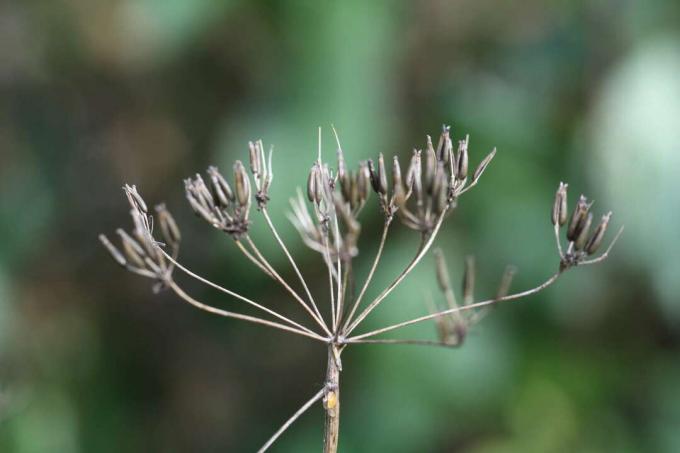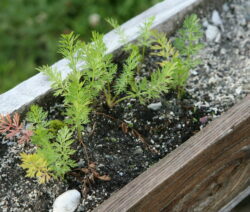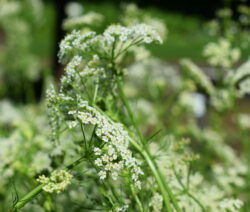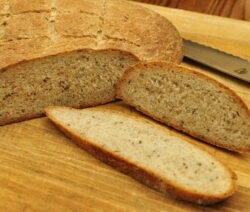Caraway has been cultivated for a long time for its healing properties. But growing in your own garden is not only worthwhile for the spicy seeds.

The real caraway (Carum carvi) belongs to the umbelliferae family (Apiaceae) - one of its relatives is, for example, the dill (Anethum graveolens) or the fennel (Foeniculum vulgare). Already around 2000 years ago the plant was demonstrably used for the preparation of food. Best known are probably its spicy, hot seeds - but the foliage and the developed taproot can also make a culinary contribution. The real caraway also cuts a fine figure as a medicinal plant. This was already known in the time of Charlemagne. The cultivation of the umbelliferous plant is easily possible in our geographical regions. Caraway has its origins in the Mediterranean and the Middle East, but its natural range extends all over Europe to Siberia, Central Asia and even China. Here you can find out what to watch out for in cultivation and what is best to do with the caraway after harvesting.
Synonyms: Feldkümmel, Köm, Kümmich, Wiesenkümmel
contents
- Grow caraway seeds in your own garden
- Caraway seeds: harvest and store properly
- Caraway: Use in the kitchen and as a medicinal plant
Grow caraway seeds in your own garden
Location
Most herbs prefer dry and well drained soils, but exceptions prove the rule, as is so often the case in life. Caraway takes on this role. It feels most comfortable in moist and loamy soils. Nevertheless, the umbelliferous plants are also happy about a sunny to partially shaded location. In addition to the moisture level of the soil, attention should also be paid to its pH value. If this is too acidic, the soil should be limed. A pH value between 6.0 and 7.5 is ideal for caraway seeds.
The neighbors should also be considered when choosing a location. Above all, if the distance to its umbelliferous colleague fennel is too short, it should be avoided during cultivation. It is also recommended, as with many Apiaceae It is common to take a five-year break from growing caraway seeds in the same place in the bed. In principle, the caraway can of course also be grown in containers on the terrace and balcony. However, when choosing a pot or balcony box, it should be borne in mind that caraway forms a taproot about 15 cm long.



Multiplication
The real caraway is traditionally propagated by sowing. Since the spice is a light sprout, it is advisable not to cover the seeds with a layer of substrate that is too thick. If the seeds are spread directly outside, the best time for this is from April. With pre-cultivation in the house, sowing can be carried out as early as February. The germination of the caraway seed is relatively slow. Only after about three weeks do the first seedlings break through the thin substrate layer that protects against drying out at an optimal temperature of 20 ° C. Caraway is a biennial plant. In the year after sowing, the plant forms flowers, which ensure independent reproduction and offspring in the next year. If this automatic rejuvenation is undesirable, especially in view of the advisable break in cultivation, the flowers must be removed prematurely.
Combined cultivation
Caraway seeds can also be produced after the harvest of cereal crops in July or August. This has the advantage that in the first year, when the caraway does not yet develop flowers, it can still be harvested from the built-up area. This procedure is quite common in the commercial cultivation of caraway seeds. Combined cultivation with a so-called cover crop is also conceivable. The caraway is sown with a stronger growing culture such as maize. The cover crop overgrows the caraway in the first year. This is not a problem, because the cover crop is harvested in the first year. The only disadvantage: In the second year, due to the competition with the cover crop in the first year of cultivation, fewer caraway seeds can be harvested than if the caraway had been grown alone.
A detailed step-by-step guide to the Cultivation of caraway seeds You will find here.
Watering and fertilizing
As already mentioned, caraway places great value on a rich water supply. Thus, even during shorter dry periods, the handle should be in the direction of the watering can in order to optimally supply the spice. For the supply of nutrients, it is sufficient to incorporate a primarily organic long-term fertilizer such as our Plantura Organic universal fertilizer or from compost. This should be repeated in the early spring of the biennial plant's second year of life. This guarantees a well-strengthened start to the next year.
Caraway seeds: harvest and store properly
Since caraway does not bloom until its second year of life, the coveted, spicy seed can only then be harvested. When the time for harvest has come can be recognized by the brown color of the inflorescence and fruit. This is mostly in the months of June and July. While the plants are threshed mechanically in commercial cultivation, the entire plant can simply be cut off generously when growing in the home garden. Flowering is the biennial plant's death sentence anyway. In order to be able to harvest the seeds, the flowers have to be dried and then the seeds can be stored dry in an airtight container.
The taste of the foliage of the two-year-old umbellifer is reminiscent of parsley and dill. It can always be harvested until it blooms. But be careful: do not harvest too much and thus weaken the growth of the plant. The taproot can also be used in the kitchen. Logically, the harvest time for this part of the plant has only come with the blooming and the cutting of the plants.
You can find even more interesting information at Real caraway: water and harvest properly.
Caraway: Use in the kitchen and as a medicinal plant
As already mentioned, the taste of the caraway leaves is reminiscent of parsley and dill. They are therefore ideal for seasoning soups or salads. The taproot, which tastes like caraway seeds, can be cooked as a vegetable like carrots. However, the most common use in cooking is with seeds. The caraway seeds are characterized by a characteristically spicy and rather pungent taste. Caraway seeds are particularly popular in Scandinavian and Eastern cuisine. In particular, it is often used to refine various bread variations. But cabbage dishes are also often refined with caraway seeds, because it leaves the hard-to-digest cabbage dishes more easily in the stomach. There is also a caraway schnapps called Aquavit, which is very popular after a meal to stimulate digestion. But be careful: If consumed too often, alcoholic beverages containing caraway may cause liver damage due to the essential oils they contain.



But the caraway also has good sides as a medicinal plant. The content of the positive essential oils is highest in the seeds, from which the so-called caraway oil can also be extracted. In addition to the digestive effect, the real caraway can also have an anti-spasmodic and antimicrobial effect. The spice is mainly used as a medicinal herb in tea. In 2016, Erl was even named Medicinal Plant of the Year. Growing the umbelliferous plants yourself means bringing an award-winning star into your own garden who not only tastes good, but is also good for you.
